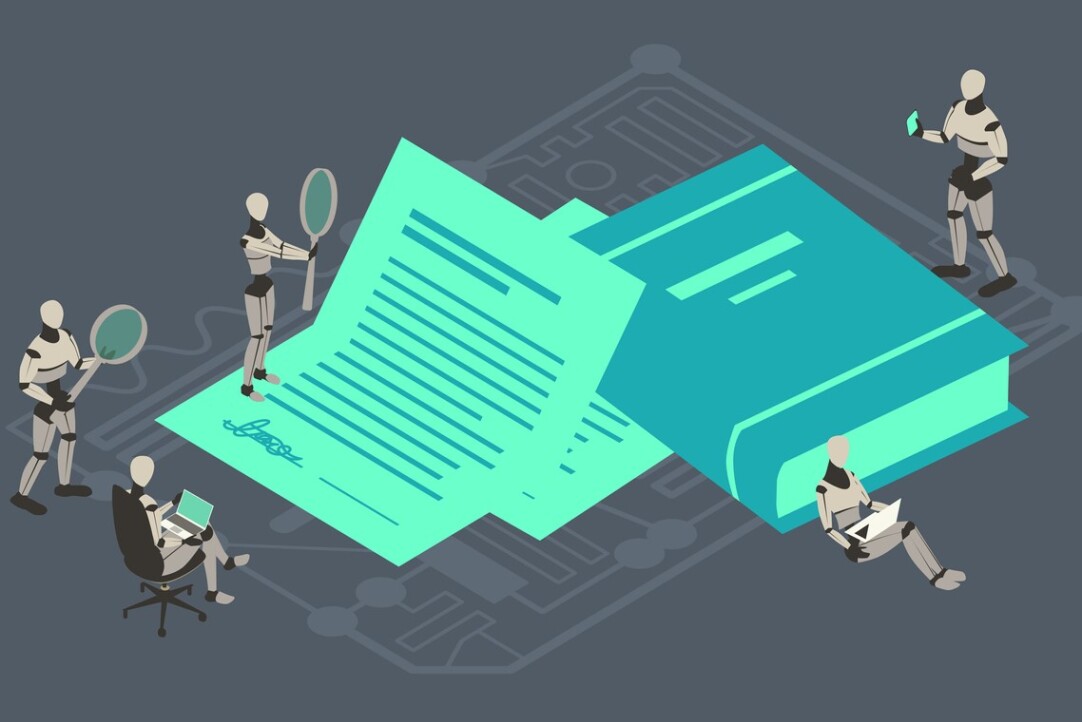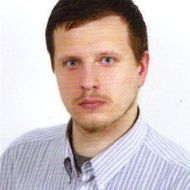‘Bots Are Simply Imitators, not Artists’: How to Distinguish Artificial Intellect from a Real Author

Today, text bots like ChatGPT are doing many tasks that were originally human work. In our place, they can rewrite ‘War and Peace’ in a Shakespearean style, write a thesis on Ancient Mesopotamia, or create a Valentine’s Day card. But is there any way to identify an AI-generated text and distinguish it from works done by a human being? Can we catch out a robot? The Deputy Head of the HSE School of Data Analysis and Artificial Intelligence, Professor of the HSE Faculty of Computer Science Vasilii Gromov explained the answer in his lecture ‘Catch out a Bot, or the Large-Scale Structure of Natural Intelligence’ for Znanie intellectual society.
‘Why are modern texts created and who writes them?’ asked Vasilii Gromov. His generation and the generation of lecture listeners grew up on works written by people for people: authors of such texts put a certain meaning into their works, had a certain goal, whether the book was ‘Sleeping Beauty,’ ‘War and Peace,’ or a textbook of mathematical analysis, the professor notes. However, nowadays, children from a very early age are surrounded by texts written by an unknown author with an unclear purpose for an undefined audience. Vasilii Gromov and his colleagues wondered whether such a child would grow up the same way the previous generations have done.
The ongoing change is neither good nor bad, because the world is transforming. Humankind is now experiencing the process of ‘co-evolution of artificial intelligence and humans.’ Along with its rapid development, AI is adapting to humans, but humans also are beginning to adapt to artificial intelligence as well. To secure our future, or at least for ‘basic information hygiene,’ we need to learn to distinguish texts generated by bots (artificial intelligence systems that generate texts in natural languages like Russian, Chinese, etc) from those written by people.
Using a number of existing generated texts, it would not be difficult to identify whether a new text was written by a specific bot or a human: we simply need to load a large number of similarly generated texts into the neural network—and there you go, mission accomplished. However, after this, no-one would continue using that particular bot, and it would simply be replaced by another artificial intelligence. Therefore, scientists need to develop a mechanism capable of distinguishing any bot from any human. To do this, we need to look at the structure of language itself, which brings us to research, explaining natural languages from a mathematical point of view. Now, let’s take a look at the necessary steps.
The scientific field of natural language processing works, in particular, with the representation of words and sequences of words (n-grams, where n is the number of words) in the form of vectors (several elements of a certain number in a row), which creates a certain vector space.
Working with the representation of individual words reveals that the vocabulary of bots is no different from the vocabulary of an ordinary person. However, as soon as it comes to a sequence of two or three words, it turns out that the sequence generated by bots is significantly more predictable and much poorer in linguistic terms than the one that even the most poorly educated person can create (for example, a bot is more likely to repeat patterns). The difference between the n-gram sequence of bots and people is statistically significant even for large bots (ChatGPT), and this is what helps catch them.
Further study of natural language from a mathematical point of view brings scholars to some judgments on the location of such word vectors in space. There are regions of vector space (especially when it comes to the sequences of words) that only bots visit, and others that only people visit. Most (90–95%) are used by both, but there are separate bot areas—which is another way to catch them out.
If we cluster (a mathematical operation when sets of similar elements can be combined into one group—a cluster) a sequence of bots, these sequences turn out to be more rigid, compact, and without any discrepancies. When a verbal sequence of people of different genders and ages, with different education and backgrounds is clustered, the result is more blurry, indistinct clusters. Humans think significantly less clearly than bots, and this is another way to catch them.
If we represent each word or each n-gram as a vector, then their entire collection can be represented as a geometric object or a certain surface in a multidimensional space. Then, for example, if we take all possible word sequences in Russian, we may find that they do not fill the entire semantic space, but only part of it. Scientists can study and measure this sequence as a surface, even compare it with other surfaces (for example, with the surface of the English language). So, every surface in space has a dimension, ie, the number of independent parameters necessary to describe this object (for points on a sphere, for example, these are two values—longitude and latitude).
Studying the dimension of natural language, Vasilii Gromov expected to find an infinite value, but in the end, analysts came to the conclusion that language has a 9–10-digit dimension, and this figure varies slightly from language to language, but what is certain: human language lies in larger space dimensions than the bot's language.
Finally, the results of a recent 2023 study showed that this surface has ‘holes’ in it, like Swiss cheese. The holes are those areas of semantic space that our language has not yet reached. Although at the moment analysts cannot clearly indicate what is hidden behind them, they can detect them. Different languages have different holes, also referred to as ‘blind spots.’ When catching bots, it is important to remember that people are drawn to the boundaries of such holes, because they use language to create new meanings and ideas. Meanwhile, bots, like learned programs, move away from these holes, which makes the task of catching them easier for now. Surprisingly, it is humour that most often appears at the boundaries of such holes.
‘Bots are simply imitators, not artists. Technology does not stand still, so we must try to solve this “bot-catching” problem and understand what a language is from a mathematical point of view,’ summarised Vasilii Gromov.
See also:
Larger Groups of Students Use AI More Effectively in Learning
Researchers at the Institute of Education and the Faculty of Economic Sciences at HSE University have studied what factors determine the success of student group projects when they are completed with the help of artificial intelligence (AI). Their findings suggest that, in addition to the knowledge level of the team members, the size of the group also plays a significant role—the larger it is, the more efficient the process becomes. The study was published in Innovations in Education and Teaching International.
HSE Researchers Assess Creative Industry Losses from Use of GenAI
Speaking at the IPQuorum.Music forum on October 15, Leonid Gokhberg, HSE First Vice Rector, and Daniil Kudrin, an expert at the Centre for Industry and Corporate Projects of HSE ISSEK, presented the findings of the first study in Russia on the economic impact of GenAI on creative professions. The analysis shows that creators’ potential losses could reach one trillion roubles by 2030.
‘Fall into ML Has Firmly Established Itself as a Landmark Event in Russia’s AI Scene’
On October 24–25, 2025, the AI and Digital Science Institute of the HSE Faculty of Computer Science will host the fourth annual Fall into ML 2025 conference at the HSE Cultural Centre. The event is once again supported by its general partner, Sber. The focus this year is on breakthrough research and the future of fundamental AI.
Critique of Obscure Reason: Artificial Intelligence in the Perception of Mathematicians
Mathematicians at HSE University believe that there is no need to fear losing jobs because of the widespread use of AI, while at the same time they warn against uncritical acceptance of works and projects prepared with its help. AI, however, can be a useful tool in research, creating models and processing large volumes of information.
Registration for Russian Olympiad in Artificial Intelligence 2025 Now Open
Registration for the fifth season of the Russian Olympiad in Artificial Intelligence has opened. This year, the competition has gained international status. The event is open to students in the 8–11 grades both in Russia and abroad. The winners will receive benefits when applying to Russian universities.
Global AI Trends Discussed at International Foresight Workshop at HSE University
At an international foresight workshop on artificial intelligence held at HSE University, Russian and foreign scholars discussed the trends and challenges arising from the rapid development of AI.
HSE Students Win International Olympiad in Artificial Intelligence
In the finals of the olympiad, the Russian team competed with 300 talented schoolchildren from 61 countries, including Australia, Brazil, Hungary, China, Mexico, the United Arab Emirates, Poland, Serbia, Singapore, the USA, Sweden, and Japan. The finals included team and individual rounds. In the team round, the Russian team made it into the top 10, winning a silver medal. In the individual competition, Russian schoolchildren won six gold medals, one silver, and one bronze.
‘Neural Networks Can Provide Assessments As Accurate As Humans’
Voice assistants have become part of everyday life. They can plan routes, play music and films, and answer questions. But the quality of their speech requires assessment. To address this, students of the Applied Artificial Intelligence Workshop at the HSE University and VK Engineering and Mathematics Schoolhave developed neural networks capable of evaluating speech synthesis.
HSE to Entrust Routine CPD Programme Development to AI
HSE University, together with the EdTech company CDO Global, is launching AI-based constructors to streamline the design of continuing professional development (CPD) courses. The new service will automate the preparation of teaching materials and assessment tools, significantly reducing the time and resources required of lecturers and instructional designers.
HSE University Becomes Absolute Leader in AI Alliance Ranking of Universities
TheAI Alliance Russia has announced a new ranking of Russian universities based on the quality of education in the field of AI. A total of 203 universities from 68 Russian regions participated in the ranking. HSE University was the first to join the highest A++ group.



